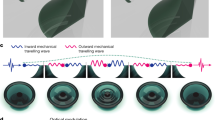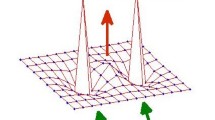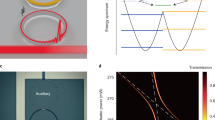Abstract:
Cavity solitons were recently predicted in semiconductor microresonators grown with a vertical geometry. By exploiting a previously introduced model valid for both passive and active configurations of a multiple-quantum-well device, we studied the response in the time domain offered by such self-organized structures in the device, when a small modulated optical signal is applied. Using appropriate symmetry considerations, the (2+1)-dimensional problem is reduced to a tractable form, by means of a semianalytical method. We demonstrated that large differential-gain factors, competitive with those of other all-optical and some opto-electronic devices, are attainable, when the output signal is collected at the peak of the cavity soliton. This fact, in connection with the reconfigurability properties already established for cavity soliton arrays, allows to conceive different schemes for optical information handling: feasible arrangements for parallel amplification and for signal commutation are proposed.
Similar content being viewed by others
Author information
Authors and Affiliations
Additional information
Received: 11 December 1998 / Received in final form: 25 February 1999
Rights and permissions
About this article
Cite this article
Spinelli, L., Brambilla, M. Signal amplification by means of cavity solitons in semiconductor microcavities. Eur. Phys. J. D 6, 523–532 (1999). https://doi.org/10.1007/s100530050337
Issue Date:
DOI: https://doi.org/10.1007/s100530050337




